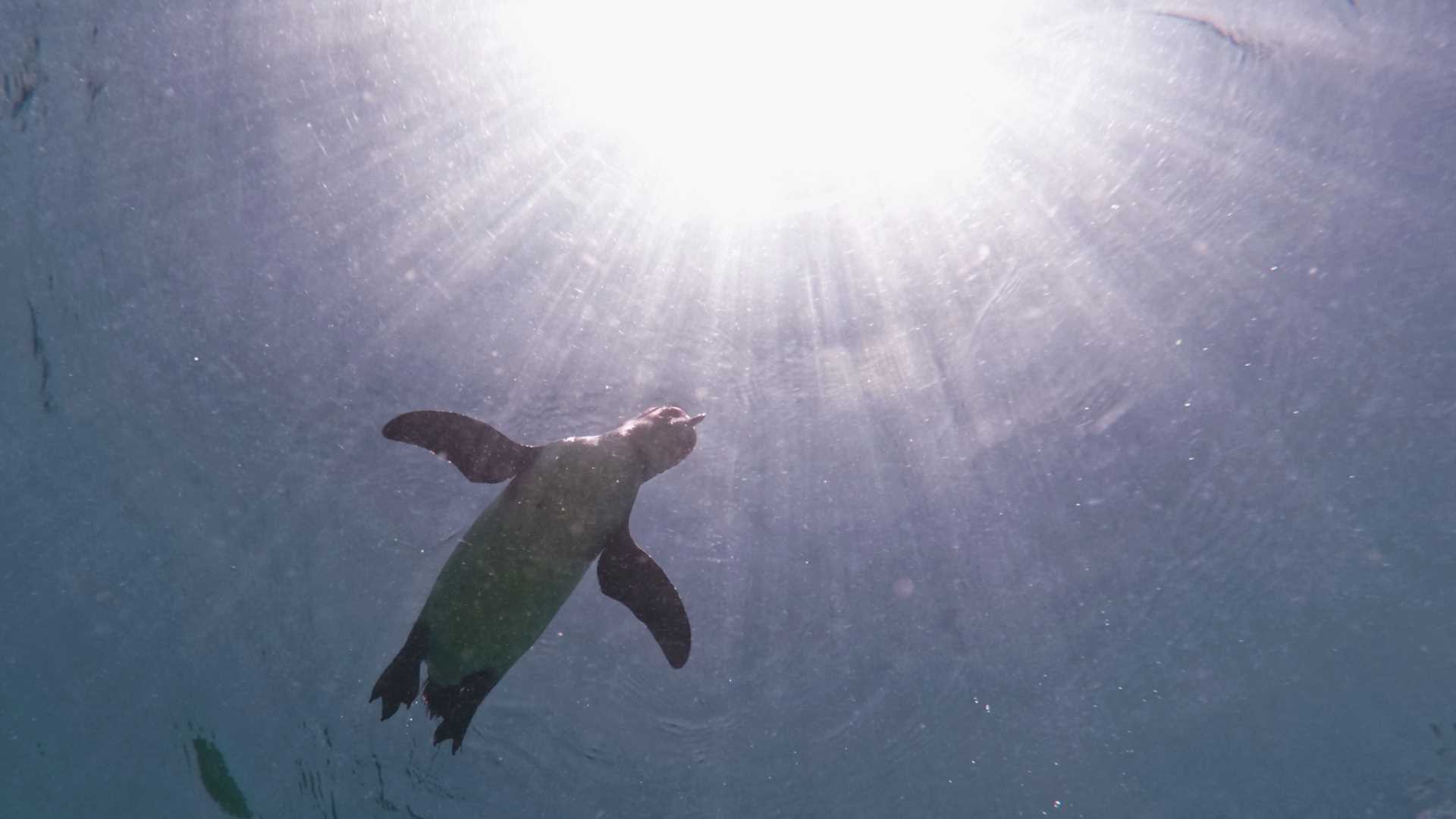Today we started our day early to make the most of it. Our landing spot was Bartolomé, a small islet but a geological wonder. Here we can see and learn about the origin of the islands. The Galapagos hotspot is what originated most of the islands, but there is also a divergence of tectonic plates that produces volcanic activity. At 6:30 a.m., we began ascending. The landscape was beautiful. As we walked, we learned geological terms like tuff cones, cinder cones, spatter cones, and lava tubes. At the top, we appreciated the volcanic scenery with awe.
As the sun rose and the day warmed up, we went to the water. We explored the beach and went deep-water snorkeling. The area is full of sharks, rays, fish, and even Galapagos penguins. The excitement of seeing a raft of penguins swim by is incomparable, and everybody got to enjoy that feeling.
The afternoon was dramatically different but no less spectacular. Santa Cruz, the most populated island of the group, offers incredible wildlife. Dragon Hill is a restored area of the national park. Local park rangers eradicated invasive species and reintroduced land iguanas, the dragons of the Galapagos. We saw burrows and counted at least 25 iguanas! Our guests helped us spot many of them. They were everywhere today–eating, basking right on the trail, and hiding under the vegetation. Land iguanas are herbivorous; when they are young, they are insectivorous. We learned about the natural history and behaviors of the iguanas, and we had great chances to photograph them. Dragon Hill is lush this time of year. Insects jump and fly everywhere, among them sulphur butterflies, painted locusts, and zigzag spiders. Our first full day ended perfectly in the Galapagos Islands.







